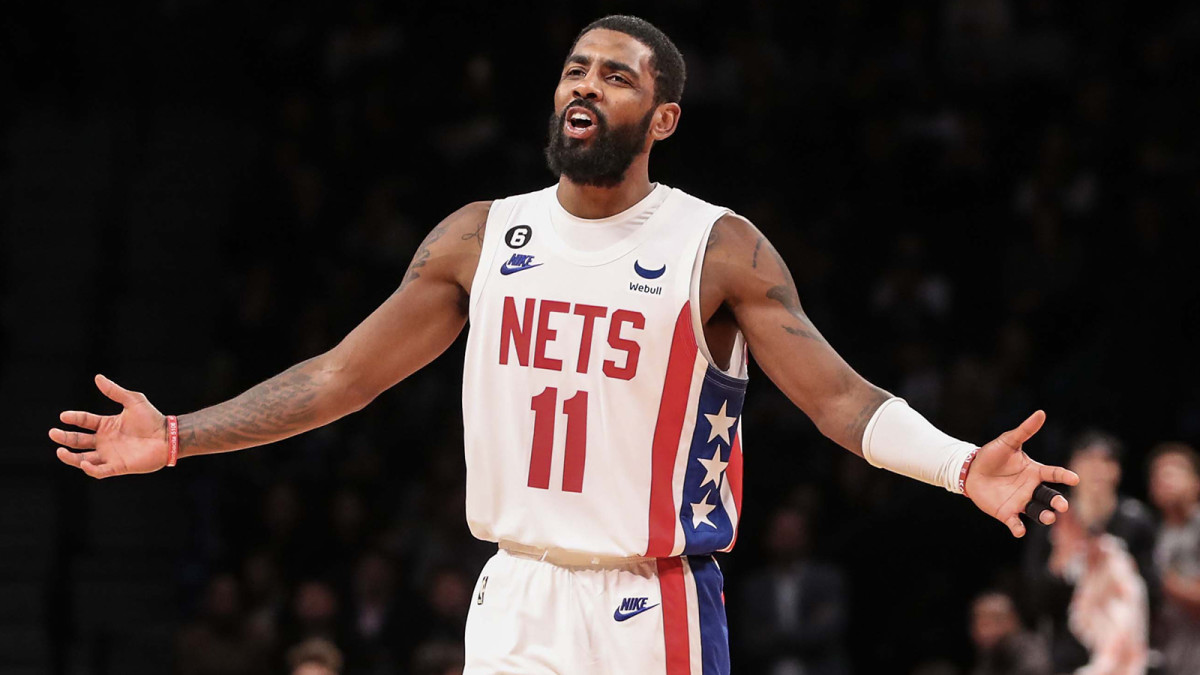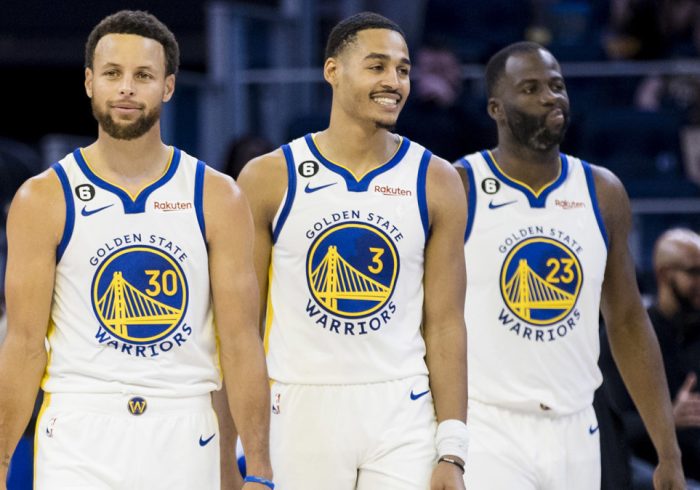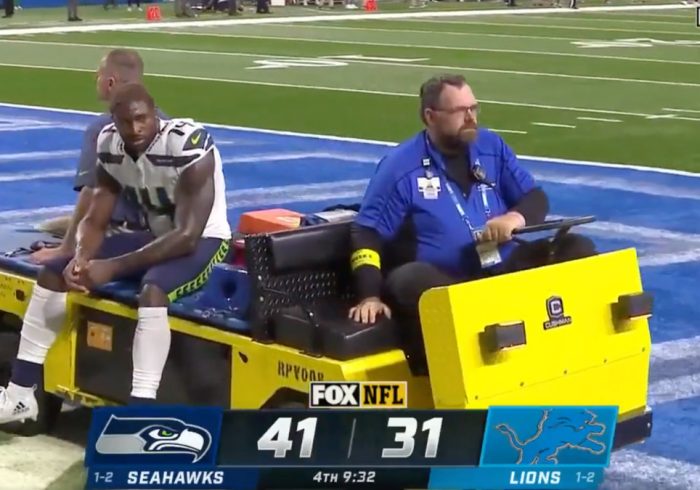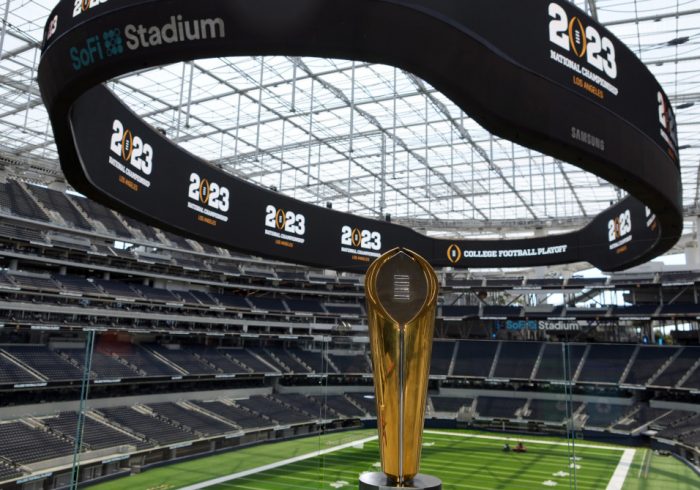It would have been understandable, if not conventional wisdom, to expect the Cavaliers to struggle a bit early on this season.
After swinging a stunning late-offseason trade for three-time All-Star Donovan Mitchell, Cleveland lost the ability to develop true on-court chemistry during the preseason when Evan Mobley suffered an ankle injury that kept him out of the lineup. Then, in the team’s season- opening loss two weeks ago, Darius Garland, the other All-Star member of the Cavs backcourt, was sidelined with an eye laceration that he’s still yet to return from. The predicament made for a bit of an uphill climb for Mitchell, who’d now be a lone, star wing surrounded by a completely different sort of offensive talent than what he had with the Jazz, who led the association in offense last season with an elite screener and an abundance of floor spacing.
In the five games since Cleveland blew a late lead in Toronto, though, the Cavs have been just fine. Better than fine, actually. They’ve reeled off five straight to open the campaign 5-1 without Garland as Mitchell has picked up the slack with MVP-caliber averages: 32.2 points and 7.3 assists on 49.6% shooting overall and 45.5% from three while playing a league-leading 39 minutes per night.
It’s certainly one hell of a way to get around the “How will Donovan Mitchell fit in?” question.
Mitchell’s early takeover has been a work of art. After dropping 41 in a victory over the defending conference-champion Celtics last week, he torched the Knicks with a dominant you-should’ve-just-given-into-Danny-Ainge performance Sunday: 38 points and 12 assists, with eight triples; five of which he sank in a tone-setting first quarter.
More of the game has been placed in Mitchell’s hands than he’s even used to. His usage rate—the percentage of team possessions that end with him shooting or turning the ball over—is virtually the same as it was in 2021–22, and in 2020–21. But with Garland out, his ballhandling has increased by nearly 50%. Mitchell’s 9.1 minutes of possession per game, which rank second in the NBA behind Luka Dončić, are up from last season’s 6.2 minutes per night.
He’s making the most of the extra time on the ball, logging a career-high 34% assist rate while also doing max damage when calling his own number. Mitchell rates in the 98th percentile in isolation offense, shooting a blistering 70% on his one-on-one looks, per Synergy Sports.
Perhaps most impressive is the fact that he’s been able to smoke opposing defenses despite them keying in on him from one play to the next. In Utah, where the Jazz had three other wing starters who shot nearly 40% from deep, stoppers often couldn’t limit Mitchell by throwing too much attention at him. With Cleveland, which features 33% career three-point shooter Caris LeVert and a pair of non-shooters in Mobley and Jarrett Allen, it’s a more worthwhile gamble to make the other guys beat you if they’re stationed out past the free-throw line. (That can be a risk, too, as Mitchell has shown the ability to pick defenses apart when they neglect the bigs.)
Yet Mitchell has gotten the best of nearly everyone. The best example came Sunday, when he used his incredible quickness and footwork to all but dice three defenders by splitting a pick and roll, then turning on the spin cycle above the charity stripe. The result was an enormous, video-game style jam for the 6′ 1″ Mitchell. Except this, like the Cavs’ success so far, was real.
“Donovan was not going to let us lose this game,” coach J.B. Bickerstaff told reporters after the victory. “He is a complete basketball player. The dude is elite. I don’t know what he can’t do on the floor.”
To be clear, there are a number of other factors at play in the Cavaliers’ fast, shorthanded start. The team plays at the pace of a tortoise, which helps them limit opponents to the fewest three-point tries in the league on a night-to-night basis. Second-chances against the Cavs are rare. Cleveland thrives on turning opponents over, and when that happens, the club has been fantastic at cashing in on the mistakes, scoring 1.53 points per possession after forcing a miscue. That’s the third-highest rate in basketball, according to advanced-data site, Inpredictable.
Like with any team, there are areas to keep an eye on. How do things change, with Mitchell and the Cavs more generally, once Garland returns? It’s natural to think about how those two will play off one another within the offense. (Bickerstaff has already vowed to stagger their minutes so that at least one of them is on the court most of the time.) But the real question is whether Cleveland—currently a top-three defense—can continue to be elite on D with a pair 6′ 1″ guards defending the perimeter. The pathway to getting stops is clearer when one man is sidelined.
Similarly, there’s still the question of which player would be best to step in and grab the starting small forward role on a more permanent basis. (It’s been a moot point with Garland injured, since there’s been an extra spot available.) LeVert can score—he also had 41 in the win over Boston—and has been a good distributor to start the season. But he isn’t a high-level defender, and isn’t the most natural fit to try and stop the murderer’s row of scoring forwards—Giannis, Tatum, Durant—that any East contender might have to go through during a playoff run. Isaac Okoro, the small forward who’d seem best suited for that role on D, hasn’t looked anywhere near aggressive enough on offense to hold down the spot, and has seen a bit less playing time as a result. Dean Wade, the Cavs’ formerly undrafted forward, has been the best shooter to fill the role, and may get more opportunities in the future. But in all honesty, it could end up being Mobley, the towering 21-year-old talent, to take on such defensive responsibilities.
It’s a beautiful, privileged set of problems to even be pondering for the moment. As I wrote in my season-preview feature on the Cavs, it’s been almost 25 years—1998—since they reached the playoffs without LeBron on the roster.
If they can keep up this momentum—or even a moderate chunk of it—once Garland returns, they’ll be able to dice through that statistic the way Mitchell has with defenses thus far. And so far, it’s looking like they’ll be able to do just that.
Meat and potatoes: Good reads from SI this past week
My teammate Howard Beck penned a column on Kyrie Irving retweeting an antisemitic film at a time where antisemitism is markedly on the rise.
Rohan Nadkarni went long on Ben Simmons, and why the struggling Nets to try his hand at center. In a separate piece, he wrote about the disappointing Sixers, and how their early-season issues include franchise centerpiece Joel Embiid.
I shined a light on the unexpectedly fun Utah Jazz, looking at why they’ve had so much success early on.
Our Ben Pickman wrote about what’s been among the most fun NBA rookie classes in recent memory.
The five most surprising lineups—good and bad—to start the NBA season
The Kings’ starting five: +22.5 pts per 100 possessions in 41 mins over five games
The grouping of De’Aaron Fox, Kevin Huerter, rookie Keegan Murray, Harrison Barnes and Domantas Sabonis has had a little bit of everything.
Elite rebounding marks, grabbing nearly 30% of its own misses while gobbling up nearly 83% of its opponents’ misfires. Ample shooting, knocking down almost 53% of its shots and 42% of its triples, even with Barnes and Sabonis struggling mightily from deep so far. (The smooth-shooting Murray’s been such an instant fit in this way.) And the defense has been surprisingly solid. That’s due in large part to this group, which has allowed 93.2 points per 100 possessions—a rate that would stand as the league’s best mark on a teamwide scale thus far. The lineup also plays at a blistering pace of 104 possessions per 48 minutes.
But here’s an enormous key: playing uptempo on offense hasn’t resulted in a lack of effort on defense. At least not yet. In a key development from a season ago, Sacramento—which has preached the importance of committing to transition defense—is relatively average in that regard so far, ranking 13th. That’s a night-and-day improvement from the 2021-22 campaign, when the Kings finished as the league’s fifth-worst transition D.
The Nets’ starting five: -14.2 pts per 100 possessions in 67 mins over six games
It’s a hell of a thing to look at Brooklyn, which employs Kevin Durant and Kyrie Irving—a pair of stars who are part of NBA history’s elusive 50-40-90 club—and see the club’s starting lineup is generating an anemic 101.5 points per 100 possessions. If you’re keeping score at home, that’s near-the-bottom-of-the-league bad; on par with the wayward-shooting Lakers, and the Clippers, who’ve largely played without Kawhi Leonard so far this season.
Yes, we assumed there’d be growing pains for Ben Simmons and, because of his shortcomings on offense, the guys around him. But we didn’t know there’d be this many minutes—97 so far, or almost 17 per night—with Simmons and starting center Nic Claxton sharing the court each night. (Wing Royce O’Neale rounds out Brooklyn’s starting five.)
The Simmons-Claxton pairings are understandable given that Simmons will often be assigned to the opposing team’s best wing scorer, whereas Claxton is more keen to defend traditional bigs than Simmons. But things get cramped quite quickly, even with scorers Durant and Irving, with two non-shooting threats on offense. Especially when you have a shooter like Joe Harris (who started Monday as Simmons sat out with a sore knee) who can be plugged in instead.
It will be interesting to see how Steve Nash seeks to go small, with Simmons at center, more often once Seth Curry is back. Using lineups like those would allow the team to better use its shooters, but would come with the downside of making a finesse Brooklyn club even less effective on the glass.
The Warriors’ “PTSD” lineup: -8.3 per 100 possessions in 37 mins over six games
It’s been a relatively common refrain so far this season as it relates to the Dubs: The team’s youngsters haven’t performed well as a second unit, and largely to blame for Golden State’s struggles to start the year.
That isn’t completely wrong, of course. Jonathan Kuminga in particular has been rough, shooting 33.3%. Lineups with him, Jordan Poole and James Wiseman have been blasted by 38.5 points per 100 possessions over 28 minutes so far, while ones with Kuminga, Poole and Moses Moody have lost by 17.3 points per 100 possessions in 22 minutes. With Wiseman, specifically, there just isn’t much second-unit cohesion just yet.
But the early returns on the PTSD lineup—composed of Poole, Klay Thompson, Steph Curry, Draymond Green and Andrew Wiggins (who gets no part of the acronym here, apparently)—haven’t been very good, either. Especially not when compared to last postseason, when the Warriors outscored playoff opponents by 13.8 points per 100 possessions with that grouping, and logged a 64% true-shooting percentage.
To this point, the five-man unit has defended very poorly, surrendering 117.2 points per 100 plays while being a sieve from a defensive-rebound perspective. Opponents are grabbing nearly 32% of their misses. Both are marks that would rank near the bottom of the league on a full-time scale.
Coach Steve Kerr has been vocal in calling out his team’s lack of communication defensively. And a struggling Klay Thompson has spoken about continuing to try to work himself back to where he was before his injuries.
If there’s a silver lining here, it’s that the Warriors also have one of the best statistical lineups in basketball so far, and it requires just one quick swap: plugging in Kevon Looney for Poole, which immediately mitigates the defensive-rebounding problem. The Dubs are a plus-25.3 per 100 over 81 minutes when Looney plays with that group.
Washington’s (former) starting five: +21.6 pts per 100 possessions in 69 mins over six gms
Perhaps the biggest pleasant surprise on this list comes from the Wizards, who’ve seen fantastic results when playing Bradley Beal, Kristaps Porzingis, Kyle Kuzma, Deni Avdija and surehanded newcomer Monte Morris. In fact, Washington’s had more success on offense with that group—a blistering 128.6 points—than any other five-man lineup in the league with at least 50 minutes played.
Interestingly, though, coach Wes Unseld Jr. opted to shake up his starting five Monday night, plugging in 30-year-old forward Anthony Gill in place of the 21-year-old Avdija. It was a move he’d soft-launched a game earlier, against the Celtics, by bringing Avdija off the bench to begin the second half.
Unseld said the club had a need for more playmaking in the second unit following the hamstring injury to Delon Wright, which will sideline the guard for six to eight weeks. Avdija, who possesses point-forward skills at 6′ 9″, figures to have more of a chance to handle the ball with that second group than he would with Beal and Morris in the starting five. (As a starter, Avdija was often taking on the most demanding defensive assignment from night to night.)
Just in case anyone was planning to go to Unseld with a pitchfork over the decision, it’s worth noting that the metrics with Gill as the fifth member of the group are more than solid, too: +12.8 per 100 possessions in 38 minutes of work so far.
The Clippers’ lineups with Kawhi, who’s only been able to play twice so far
It feels too soon to be “out” on the Clippers, who many of us—myself included—picked to reach the Finals this year. And to be sure, it is still a bit too early to have a change of heart, in my opinion.
That said, I wasn’t expecting Kawhi Leonard to have only played two games out of the Clippers’ first seven outings. And he’s going to miss at least the next two games as well, based on what coach Ty Lue said yesterday.
Lue said Leonard was feeling “frustrated” over his inability to be back at this point, after having missed a season and rehabbing for the better part of a year from a partially torn ACL in his right knee.
Numbers probably don’t matter that much for Leonard and Paul George, a pair of players who would illustrate the ability to contend if both are healthy simultaneously. Still, in the 39 minutes those two played alongside each other, Los Angeles was 13.7 points better than its opponents per 100 possessions while notching a 62.2% true-shooting percentage.
Seeing Leonard get more reps with new Clipper John Wall, along with the other roster additions, would be an enormous plus for this team. But the question of how often we’ll see that this season seems very much in the air at the moment.
Thanks for reading The Playmaker. Feel free to forward this email to a friend or tell them to sign up at SI.com/newsletters. If you have any specific questions, just reply to this email or send a note to [email protected] and I may answer it in a future edition.
More NBA Coverage:



